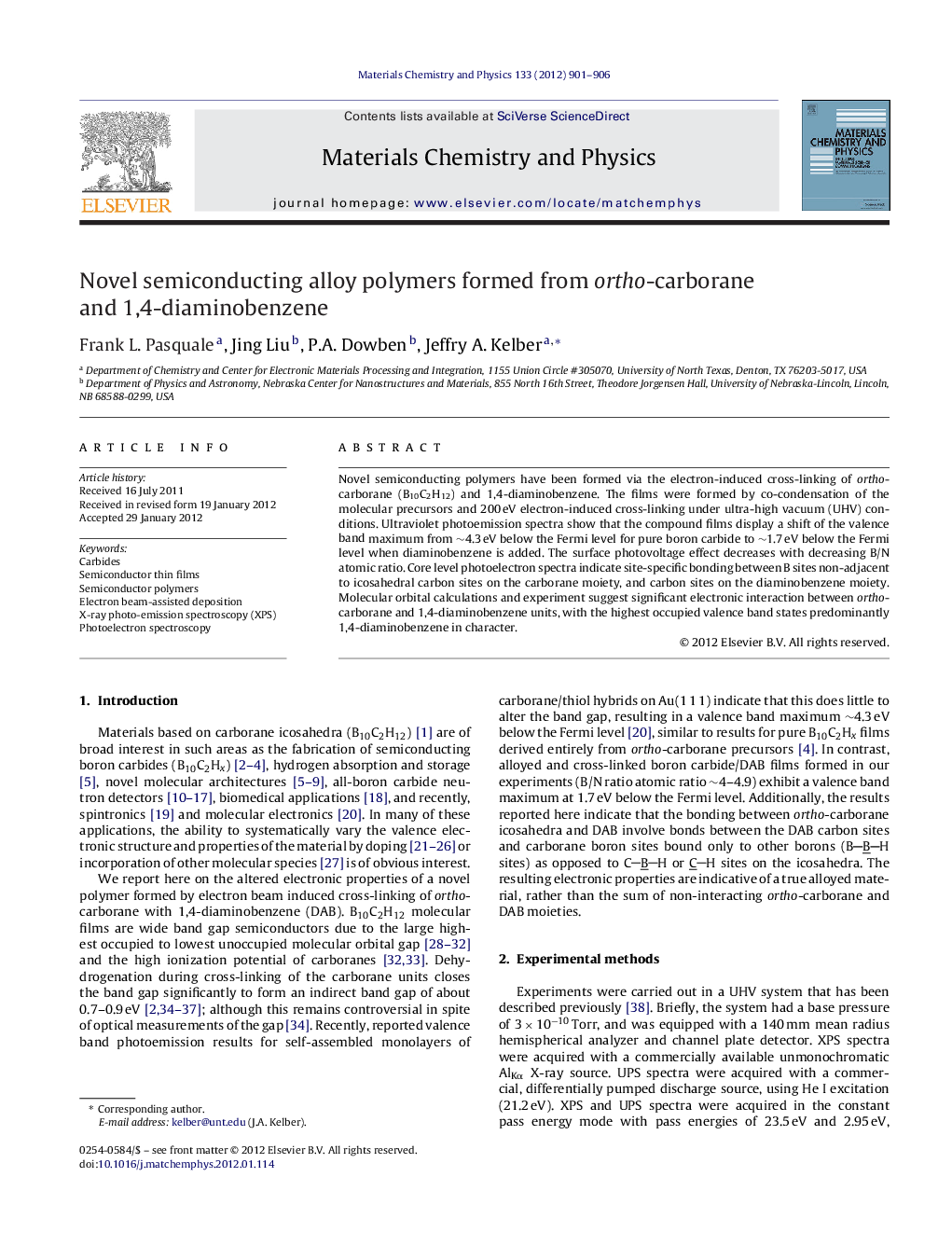| Article ID | Journal | Published Year | Pages | File Type |
|---|---|---|---|---|
| 1523272 | Materials Chemistry and Physics | 2012 | 6 Pages |
Novel semiconducting polymers have been formed via the electron-induced cross-linking of ortho-carborane (B10C2H12) and 1,4-diaminobenzene. The films were formed by co-condensation of the molecular precursors and 200 eV electron-induced cross-linking under ultra-high vacuum (UHV) conditions. Ultraviolet photoemission spectra show that the compound films display a shift of the valence band maximum from ∼4.3 eV below the Fermi level for pure boron carbide to ∼1.7 eV below the Fermi level when diaminobenzene is added. The surface photovoltage effect decreases with decreasing B/N atomic ratio. Core level photoelectron spectra indicate site-specific bonding between B sites non-adjacent to icosahedral carbon sites on the carborane moiety, and carbon sites on the diaminobenzene moiety. Molecular orbital calculations and experiment suggest significant electronic interaction between ortho-carborane and 1,4-diaminobenzene units, with the highest occupied valence band states predominantly 1,4-diaminobenzene in character.
► Novel semiconducting films were formed from ortho-carborane and 1,4-diaminobenzene. ► Electron bombardment induced site-specific crosslinking. ► Crosslinking through boron in the ortho-carborane and carbon in 1,4-diaminobenzene. ► An observed shift in the valence band maximum indicates a reduction of band gap. ► A surface photovoltage effect is observed after cross-linking.
